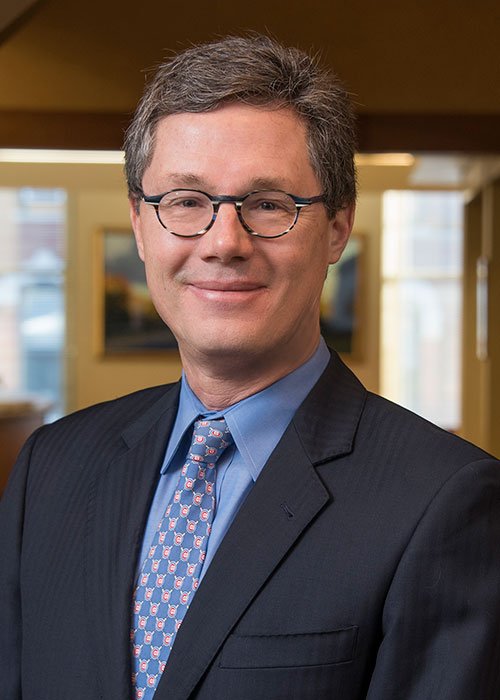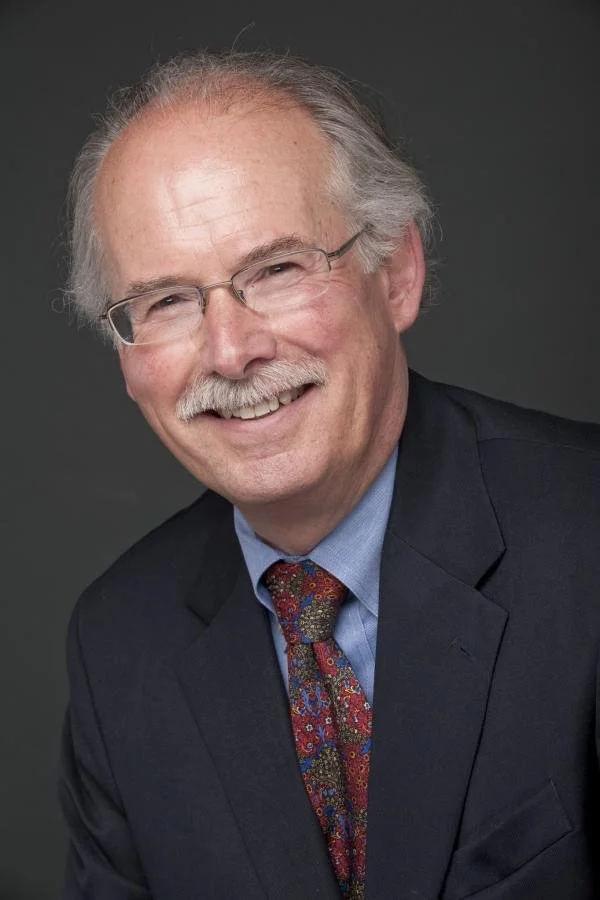A legislative commission’s report endorsed changes to the current system, but related bill remains sidelined
By Kelly Burch-Granite State News Collaborative
As decades of litigation centered on funding an adequate education for Granite State children linger on, New Hampshire lawmakers still have not addressed a potential solution outlined by a bipartisan commission they established over three years ago.
The New Hampshire Commission to Study Public School Funding, awarded half a million dollars to study the issue when it was created by the Legislature in 2019, spent a year exploring the state’s school-funding formula. Its recommendations appear in a report written by the University of New Hampshire’s Carsey School of Public Policy that was released in December 2020.
Since then, none of the recommendations outlined in the 2020 report from the Carsey School has been adopted, frustrating commission members who say the study provides a framework for increasing students' achievement, easing the burden on New Hampshire’s taxpayers and providing a more equitable framework for school funding. The report and accompanying legislation have gained attention amid ongoing discussions about adequate education funding, prompted by the state’s revision of the minimum standards for public school approval, known as the 306s.
“It is the most comprehensive, most integrated, most complete plan for public education funding reform … that the Legislature has seen for a long, long time,” said Bill Ardinger, a lawyer and Gov. Chris Sununu’s appointee to the commission.
“The commission report comes to a fundamental recommendation that the most important thing for public education policy in New Hampshire is for the state to measure and make sure that every child in every community has a chance for a good, quality public education,” Ardinger said.
The New Hampshire Commission to Study Public School Funding report ‘is the most comprehensive, most integrated, most complete plan for public education funding reform … that the Legislature has seen for a long, long time,” says Bill Ardinger, Gov. Chris Sununu’s appointee to the commission. Legislation that emerged from the report remains sidelined, despite ongoing court cases related to the issue. (Courtesy photo)
Redefining an adequate education
The biggest shift in the commission’s report is a definition of adequacy as the amount of funding needed to give each student in New Hampshire “the opportunity to achieve the average statewide outcomes.”
Right now, students in districts with higher poverty rates have lower academic success than the statewide average.
“Students educated in poorest communities [have] the poorest educational outcomes,” said Bruce Mallory, senior fellow at the Carsey School and project manager for the Commission to Study Public School Funding.
That’s a product of the current funding system, said Rep. David Luneau (D-Hopkinton), who chaired the commission and recently introduced legislation based on its findings. “How we define adequacy is contributing to the disparities in student outcomes across the state.”
About 60% of public school funding in New Hampshire comes from local property taxes. New Hampshire ranks last in the nation for the percentage of educational funding provided by the state, according to the New Hampshire Fiscal Policy Institute.
Commission members found this system to be “upside down,” Mallory said. The poorest districts are paying the highest rate on property taxes to fund local schools, yet still aren’t able to fully fund education because the property values in those areas are so low compared to towns with median or high property wealth, he said.
This disparity has garnered national attention. In 2022, the New Jersey-based Educational Law Center ranked New Hampshire the second most “regressive” state in the nation when it comes to distributing school funding.
Bruce Mallory, senior fellow at the Carsey School of Public Policy, was project manager for the Commission to Study Public School Funding. (UNH photo)
The wrong question?
Debates about the state’s role in paying for public school education center on two decisions in the 1990s by the state Supreme Court in a case brought by five school districts, led by Claremont, which determined the state has a constitutional obligation to fund an “adequate education” for all students.
Last November, a judge hearing a different lawsuit brought by the ConVal school district ruled the amount of an adequate education must be at least $7,356.01 per pupil. That’s a substantial increase over the state’s current base funding of $4,100 per pupil.
Yet commission members feel that ruling does little to address funding inequities in New Hampshire.
“It’s not one-size-fits-all,” Luneau said. “We’re going to have to get out of that mentality to properly funding our schools.”
Ardinger agreed.
“I’m not sure in the ConVal case they asked the right question, or answered the right question,” he said. The state’s role, he argues, “should be to provide disproportionate support to those communities of greatest need.”
Wealthy communities like Bedford don’t need the same support from the state as high-poverty districts like Franklin or Claremont, Ardinger emphasized, and treating all communities as equal just reinforces student achievement gaps across the state.
“The state’s role must take into account the obvious differences among local communities in terms of providing aid and support to the communities with the greatest challenges,” Ardinger said.
There is an example for this approach to funding.
“New Hampshire is not going to be the guinea pig on this,” Luneau said. “All we have to do is look one state to the south."
Facing similar litigation around school funding, Massachusetts adopted the Foundation Budget school funding formula. Under this formula, state aid is awarded based on need. For example, Lawrence, one of the poorest districts in the state, receives more than 90% of its educational budget from the state, while Westwood, a more affluent district, receives less than 20% from state funding.
The system is not perfect. Low-income districts like Lawrence still spend much less per pupil than more affluent districts, according to the Pioneer Institute for Public Policy Research. For example, in 2018, per-pupil spending in Lawrence was about half what it was in Cambridge, an affluent community.
To address that, Massachusetts lawmakers approved $1.5 billion in additional education spending in 2021, with the express goal of closing student achievement gaps between poor and wealthy districts. The 34 neediest districts in the state will each receive an average of $25 million in additional funding by 2028.
To Ardinger, the Massachusetts example underscores the need for an equitable — rather than equal — approach to adequate funding. He believes the idea that the state must provide a set amount of funding to each pupil is a fundamental misunderstanding of what it means to provide an adequate education.
“To me, nothing could be worse than a rule that says the state … must provide the same amount of money per pupil in every community,” he said. “Something is terribly broken with that rule.”
Legislation based on the Commission’s report
Although funding challenges in Massachusetts and New Hampshire have common roots, Ardinger says the Massachusetts courts explicitly called on the state to address inequities, whereas the New Hampshire courts “didn’t go that far.”
Without a clear judicial imperative, “the Legislature ended up slipping around and sliding around. It didn’t have that strong kick in the pants from the court,” he added.
However, legislation based on the commission’s report has been introduced in the House of Representatives twice, most recently earlier this year as House Bill 1586. Representative Luneau introduced that bill, called the Foundation Opportunity Plan, and although it failed to advance, he plans to introduce it again next year.
The legislation defines adequacy in terms of student outcomes and distributes funds to ensure each district can provide equal opportunities for its students to achieve average outcomes. That means lower-income districts get more state funding.
“That really unlocks the opportunity to have good outcomes for kids in Newport and Claremont and Pittsfield, [just] the same as in Hanover or Hopkinton,” Luneau said. “It’s breaking out of that uniform funding model and getting to a need-based funding model.”
Adopting the model faces barriers, including the stagnation of the current school funding system, reluctance from affluent communities, and the associated cost, said Dick Ames (D-Jaffrey), one of the bill’s sponsors.
“One of the hurdles is the recognition that an adequate education is expensive,” he said. “We have to figure out how to fund it, and that is the larger challenge. I’m hopeful that we can find a way, but I’m not sure.”
More affluent communities — which generally enjoy lower property taxes — would likely see an increase in property taxes under the legislation. This includes the district that Luneau represents, but he believes that ultimately providing an adequate education to all New Hampshire students is critical for all constituents in the state.
“At the end of the day, these are the people who drive our economy,” he said. “We need to make sure we’re doing something that’s equitable and fair for students in all these towns.”
The commission’s work was nonpartisan, Luneau said, but the recent bill was sponsored by four Democrats. Luneau hopes to work on the legislation with Republican colleagues over the summer and fall before reintroducing it next year.
“That work will be bipartisan in nature, wiggling around some things to make sure we have strong bipartisan support,” he said. “We want something that cities and towns and school boards and families can count on for the next 20 years.”
There’s “a tremendous amount of wisdom” in the commission’s report and resulting legislation, Mallory said, adding, “I would hope all of the effort is not for naught.”
These articles are being shared by partners in the Granite State News Collaborative. For more information, visit collaborativenh.org.


